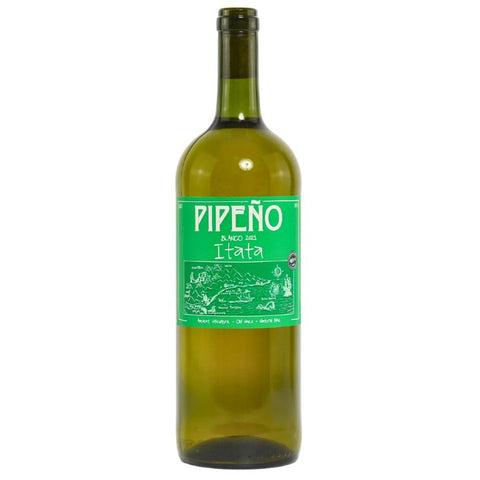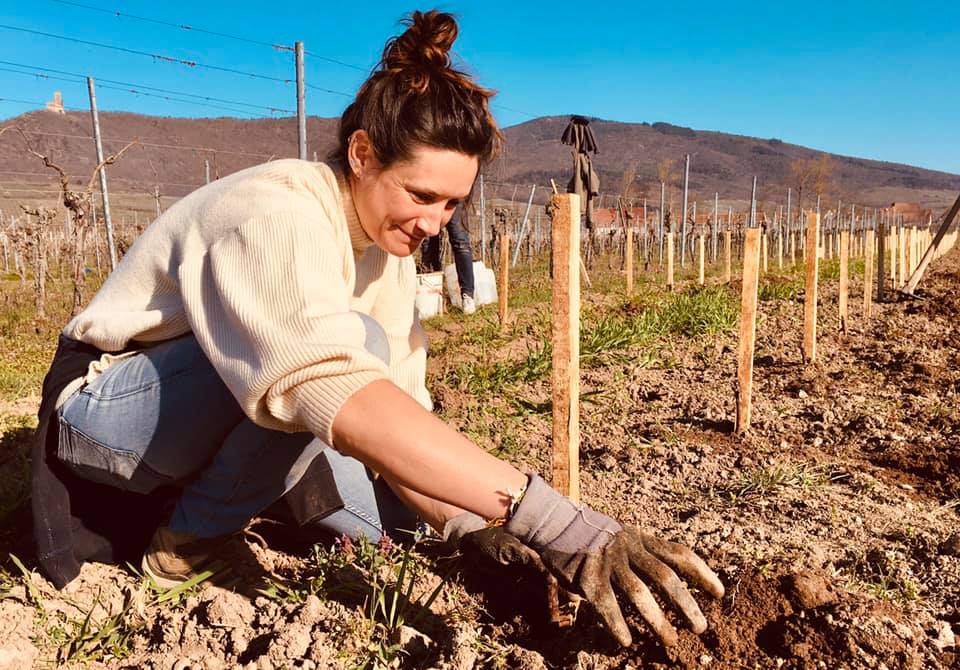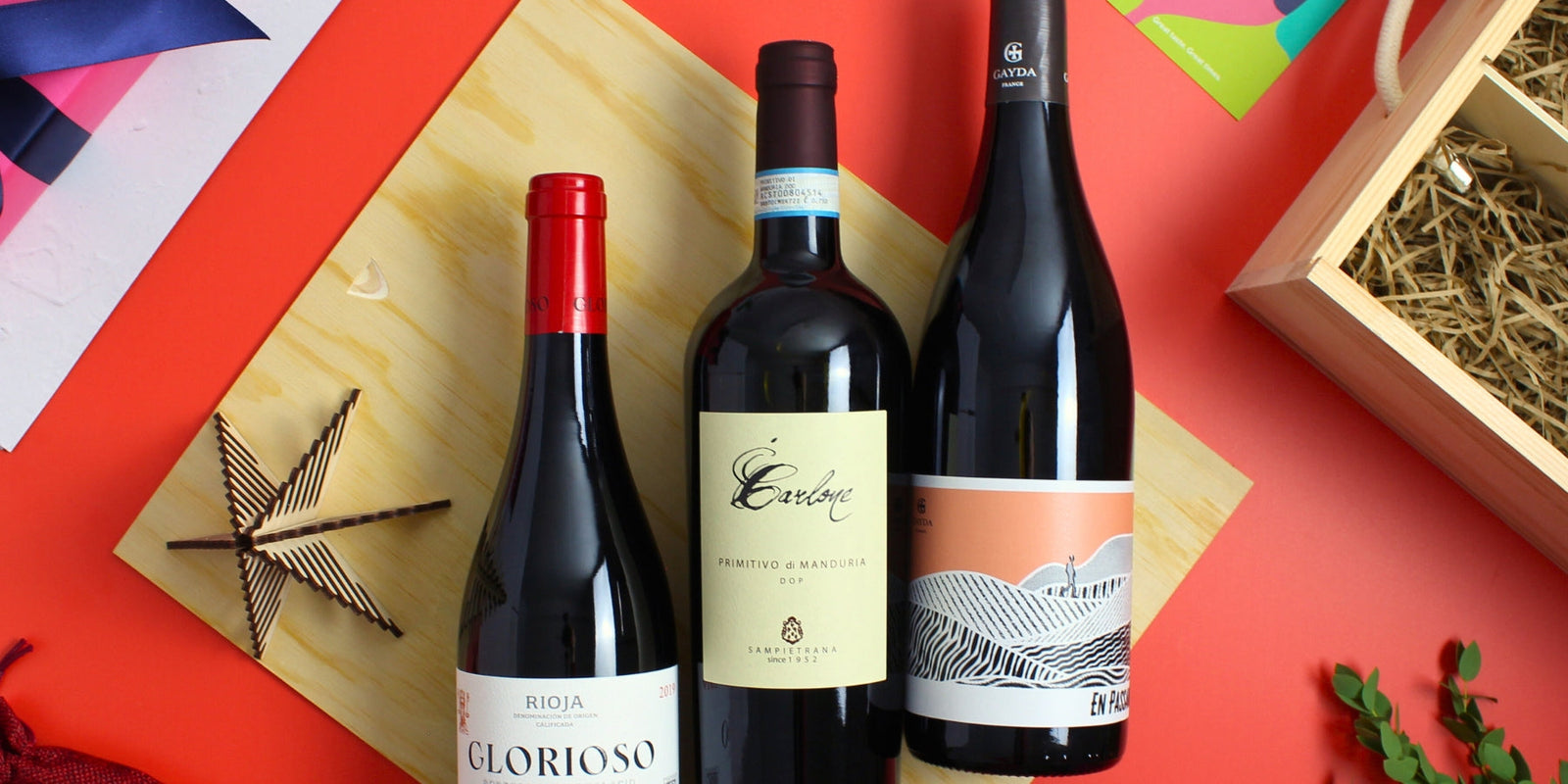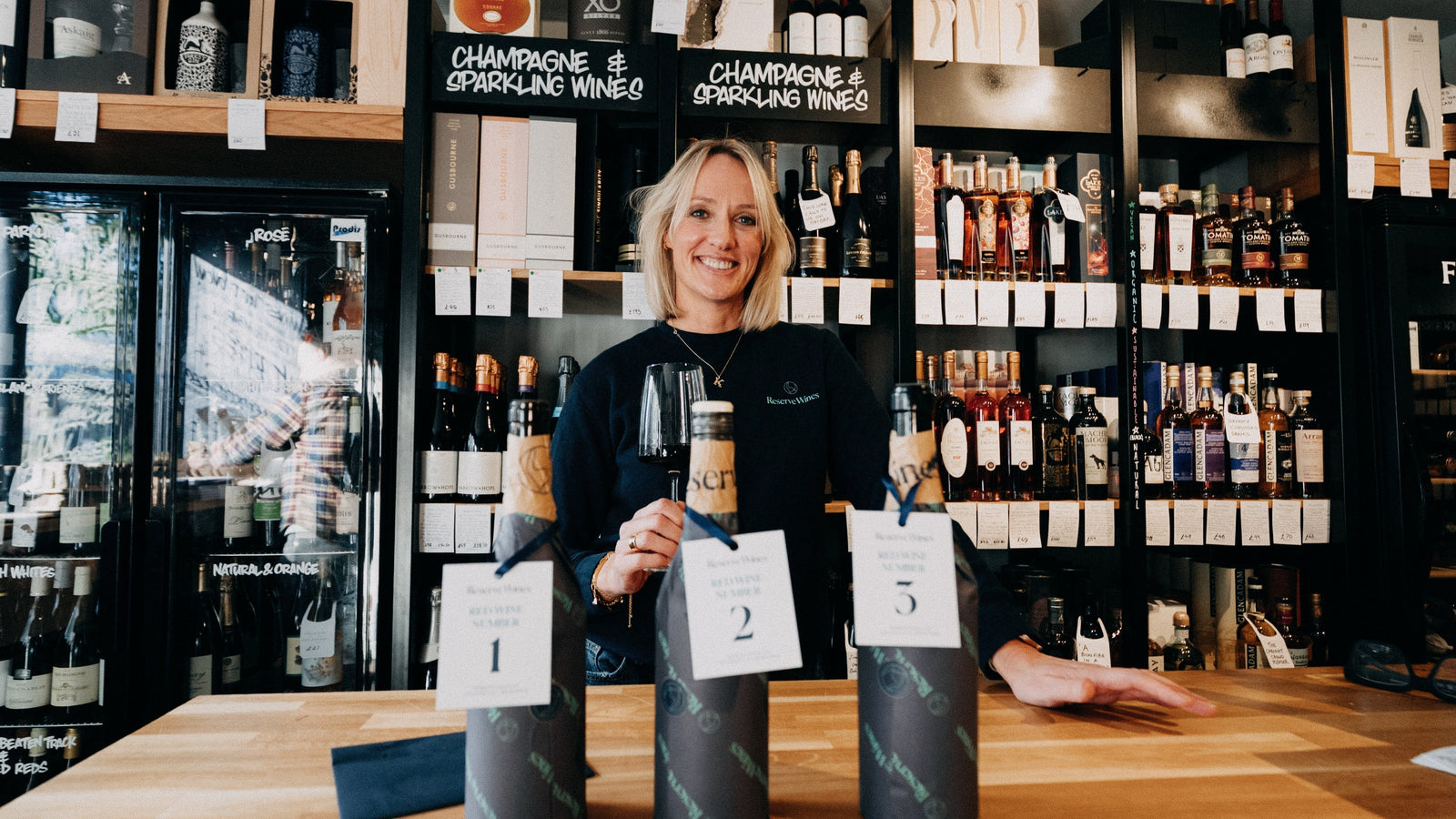The excitement and interest around natural wine has continued to grow over the past few years. With the interest comes questions. What makes it a natural wine? How is it made? And does it taste different? If you're interested in finding out the answers to these questions, we're here to help. We've put together a little guide so we can get to know the processes and practices that go on in the vineyard as well as the characters behind the labels. Plus find out which wines to try from our range to help you discover and explore this growing area.
What is natural wine?
So here's the tricky bit. There's no legal definition of natural wine. So what one person says is natural can differ from another person. However in the influential book 'Natural Wine' by Isabelle Legron MW she defines it simply as "Wines made from organic grapes with nothing added and nothing is taken away" The general idea is a philosophy to guide the winemaking process.
There are some common terms that we look for when deciding whether something has the right criteria to be part of our natural range. Inevitably this means getting into some technical details, but stick with it.

Did you know?
Wine producers, unlike food producers, are not required to label their products with a list of everything that is used in the final product. If you want to know more about what is in your wine, take a look at our mini guide at the bottom of this piece.
Organic/Biodynamic Farming
Organic farming is a way of growing crops without using synthetic chemicals, pesticides or fertilizers. Organic farmers rely on natural methods like crop rotation, composting, and biological pest control to maintain soil health and prevent diseases. This is better for the environment because it reduces pollution, conserves water, and preserves biodiversity. Organic certification can be awarded by different bodies depending on the country.
Biodynamic farming is a way of growing food that respects the natural cycles and rhythms of the earth. It's not just about avoiding chemicals and pesticides, but also about creating a harmonious relationship between the soil, plants, animals, and humans - and to those who practice this method, these are the benefits of organic farming. Biodynamic farmers use special preparations made from herbs, minerals and animal manures to enhance the vitality and fertility of the land. They also follow a lunar calendar that tells them when to sow, prune, harvest and compost. This is more than a method, it's a philosophy and a lifestyle.

Is organic wine better for you?
Organic wine may be considered healthier than non-organic wine as the grapes they are made from will contain less pesticide residue and lower levels of sulfites. However, it’s important to note that the health benefits of wine are most often associated with moderate consumption.
Spontaneous fermentation with natural yeasts
Spontaneous fermentation is when you let the natural yeast on the grapes do their thing, without adding any commercial cultured yeast or other stuff. It's a way of making wine that's more natural, more authentic, and more expressive of the terroir.
Cultured yeasts can offer more control and consistency, but ambient yeasts can add more complexity and diversity.

Low intervention winemaking
Low-intervention winemaking is a style of making wine that relies on minimal human interference and manipulation. It involves using natural or indigenous yeasts, avoiding additives and chemicals, and letting the grapes express their terroir and character. Low-intervention wines are often organic, biodynamic, or natural, but these terms are not regulated or certified. Some benefits of low-intervention winemaking are that it preserves the diversity and complexity of the wine, reduces the environmental impact, and supports small-scale and independent producers.
Unfiltered/Unfined
Fining agents are substances that are added to wine to remove unwanted particles or compounds that can affect the clarity, flavor, or stability of wine. Fining agents work by binding to these impurities and settling them at the bottom of the tank or barrel, where they can be filtered out. Some common fining agents are bentonite (a clay), gelatin (an animal protein), casein (a milk protein), albumin (an egg white protein), and isinglass (a fish bladder protein). Some of these fining agents are animal-derived, which may not be suitable for vegans or vegetarians.
Unfiltered wines may have a hazy appearance and contain more sediment in the bottle.
Low/No Added sulfur
Sulfur dioxide (SO2) is a common additive that helps preserve wine and prevent oxidation and microbial spoilage. However, some people are sensitive to SO2 and may experience headaches, asthma or allergic reactions. That's why wines with more than 10 parts per million (ppm) of sulfites must have a label that says "contains sulfites". Some also claim that SO2 masks the natural aromas and flavors of the grapes. Therefore, some winemakers opt to reduce or eliminate the use of SO2 in their wines, relying on careful hygiene, natural antioxidants, and low-intervention techniques. However, they also pose some risks, such as instability, variability and faults. Low and no added sulfur wines require more skill, attention and care from the winemaker, as well as from the distributor. They are best consumed young and fresh and stored in cool and dark conditions.
There are no wines that are entirely sulfur-free as Sulfur dioxide is a byproduct of the winemaking process. White wines generally have higher levels of sulfites than red wines and permitted levels of added SO2 vary depending on the country of origin (Wines made in the EU have lower permitted levels than those made outside the EU.) Wines with certified organic status have the lowest level of permitted SO2 and some producers will use even lower or no added SO2.

What is orange wine?
Orange wine is not related to oranges or orange juice, and it is not a new invention. It is an ancient method of winemaking that has been revived by some producers interested in traditional practices and has become a process associated with natural and organic wines. Orange wine is better described as skin-contact white wine as it is made from white grapes that are left in contact with the juice for days or weeks. This gives the wine an orange/amber hue and more tannin structure.
Some skin-contact wines are also natural, but not all of them. It depends on how the grapes are grown and how the wine is fermented and aged as discussed above.

How do we decide what is Natural wine?
When choosing wines to add to our range, we're looking for wines that are well-made first and foremost and they must be enjoyable to drink. The wines we stock are relatively 'clean' and have a little less funkiness than some you may find. This is because many of the qualities of the wine, and the subtle characteristics that can give a wine its sense of place, can be obscured when a wine exhibits too many faults.
We're also looking for wines that deliver good value. There may be some exciting wines from tiny producers, but the small scale increases the bottle cost. Wines that are vibrant, fresh and quaffable are great but can feel underwhelming if the price isn't right. We're looking for wines where the experience is worth the asking price.
Wines to try:
Our Natural Wine Introduction case is the easiest place to dive in.
Natural Wine - Introduction Case (Free Delivery on This Case!)
A great introduction to the world of natural wine. A hands off approach in the vineyards and the winery leading to wines that truly express where they come from. This case features wines that have the juicy, energetic fruit that makes natural wine so appealing. While some natural wines can have a funky side, these wines are all about pure fruit flavour. Ranging from rebellious Spanish Tempranillo, zesty Sicilian Cataratto juice and skin-contact orange wine, this is friendly welcome to the world of natural wine.
Natural Wine - Explorer Case (Free Delivery on This Case!)
If you've discovered a taste for natural wine and want to explore more juice made with minimal intervention... Meet six of our bestsellers from the world of natural wine. All these wines are made with a hands-off approach in the vineyards and the winery leading to wines that truly express where they come from. Covering a range of styles from red, white, orange and sparkling wines that demonstrate quality winemaking.

Achillee Pepin Blanc NV
"Achillée is a sustainable, project that's been Organic since the 90's and really goes for the minimal intervention winemaking approach. We love this blend that has a touch of skin contact. It has nice aromatics as you'd expect with a touch of spice and pithy texture. I'd enjoy this with a grilled mackerel."

A Los Vinateros Bravos, Pipeno Blanco 2021 (1L)
"An ideal wine for a picnic or a party for fans of Natural wine. This little gem from Chile has a bright honey blossom and citrus character with a little peach and apricot and a spicy mineral finish that even has a hint of smoke. I'd enjoy this with sardines drizzled in lemon."

Eric Texier, Chat Fou VDF 2022
This 'crazy cat' wine has a real cult following, the blend of red and white grapes producing a joyfully bright wine, with crunchy red cherry, plum fruit and spice, beautiful plush texture from the concrete fermentation, and incredible purity and drinking pleasure.
Try this with Mediterranean-style mezze, grilled lamb, roast aubergines and good company.
Further reading:
If you're curious about what goes into your wine, you might be surprised to learn that there are many common additives used in winemaking. Some of them are natural, like yeast and sulfites, while others are synthetic.
Here are some of the most common additives you'll find in wine and why they're used.
- Sugar: Sugar (usually in the form of unfermented grape juice) can be added to wine for various reasons. Some winemakers add sugar before fermentation to increase the alcohol level, a process called chaptalization. This is common in cooler regions where grapes may not ripen enough to produce enough sugar. Other winemakers add sugar after fermentation to balance the acidity or enhance the flavor, a process called dosage. This is common in sparkling wines like Champagne.
- Acid: This is a substance that affects the pH, taste, and stability of wine. Acid can make wine taste crisp, refreshing, and balanced, or sour, tart, and harsh, depending on the amount and type. The main acids in wine are tartaric, malic, and lactic. Tartaric acid is the most abundant and stable acid in grapes, and it can be added to wine to adjust the acidity level. Malic acid is another natural acid in grapes that can make wine taste green and sharp. Lactic acid is a softer and smoother acid that is produced by bacteria during malolactic fermentation, a process that converts malic acid into lactic acid.
- Tannins: These are polyphenols that come from the skins, seeds, stems, and oak barrels of wine. Tannins can give wine structure, body, color, aging potential, astringency, bitterness, and dryness. Tannins can be added to wine to enhance these qualities or correct some flaws. For example, some winemakers use gum arabic or grape seed extract to stabilize the color and reduce the astringency of red wines.
-Mega Purple: This is a brand of grape juice concentrate used to correct colour and add sweetness to red wine. This is often used in tiny amounts and usually only in the mass market wines where consistency is important for brands.
-Velcorin: A microbial agent used to prevent refermentation and spoilage. Used in tiny quantities it is very effective against a broad range of yeast, bacteria and moulds. Specifically, it is used to control spoilage yeast such as Brettanomyces (especially in unfiltered or moderately filtered wines), to decrease the amount of sulfur dioxide used in wines. to reduce warehouse holding time in early-to-market wines, and to prevent refermentation in wines for bulk transport.
These are just some of the most common additives used in winemaking, but there are many more that can affect how your wine looks, smells, tastes, and feels. Some additives are essential for making good wine, while others are optional or controversial. The choice of using additives depends on the winemaker's style, philosophy, and goals.









Leave a comment (all fields required)